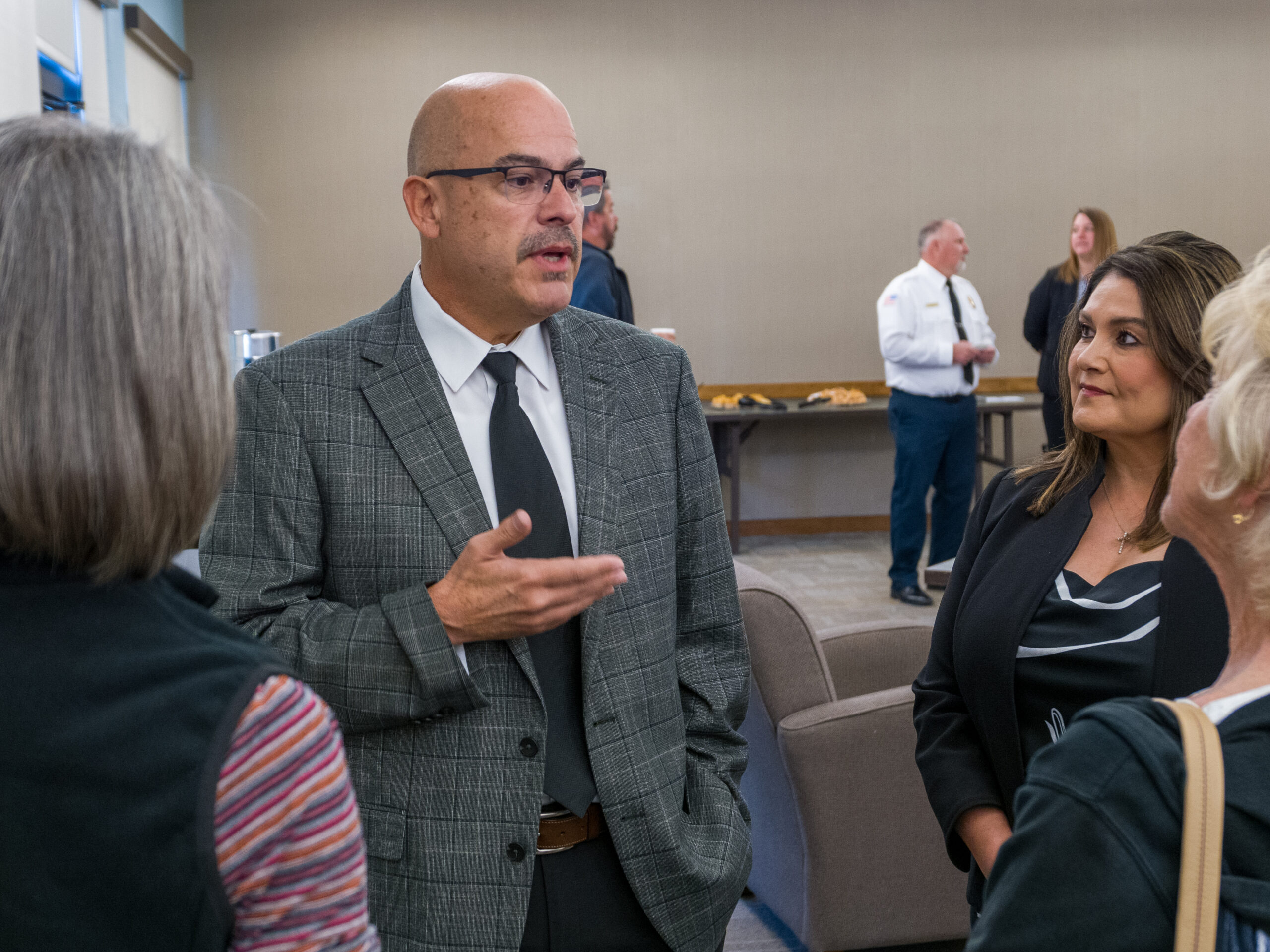Keeping kids in school is the goal of parents, schools and teachers, yet in some cases that goal is difficult to achieve.
The problem with dropouts is something all schools have to deal with, so Mingus Union High School came up with a plan to create a new position to help retain students.
Anita Glazar is the student intervention coordinator for Mingus. Her focus is on freshmen who may be struggling academically, the ones who are most vulnerable to dropping out.
“So many come into high school feeling lost. This is a big school, a big change for them — academically and socially. There’s a lot more responsibility once they hit high school,” Glazar said.
Some of the incoming freshmen have not yet learned that they need to attend school, and they need to hand in work, she said.
The premise is that freshman year is the most important year, dependent upon whether the student has success or not.
“When you look at dropout statistics, we found most often the students who dropped out did not have success as freshmen,” Interim Superintendent Nancy Alexander said.
Glazar said creating her position was the idea of Alexander after Alexander talked with staff members as to what was the best use of the casino money Mingus receives every year.
“Nancy [Alexander] felt there was a gap from students who started as freshmen to the time they reached their senior year,” Glazar said.
The job she is doing is not completely new for Glazar. From 1994 through 1998 she was the At-Risk program coordinator with Shelley Kitchen. The dropout rate at Mingus was 13 percent for school year 1994-95. The following year it dropped to 6.6 percent and stayed between 3.5 percent and 6.2 percent since. The average dropout rate for Mingus for the past 10 years, including 2007-08, is 4.68 percent.
Freshmen were chosen in part because they are still at a young enough age to affect a change, Glazar said.
“They want to be noticed. They need a connection, and my job is to get that connection,” she said. “There’s always a story behind what’s happening with a student who’s failing. We have to find out what it is and work with it.”
One way Glazar plans to do that is through conferences, not only with the student but with their parents and teachers. She is trying to get every parent in for a conference.
“I want to get everyone together related to the student — parents, teachers, counselors — to work for the student’s progress and success with the student being the focal point,” Glazar said, while recognizing that people are busy.
Mingus also has a lot of support programs such as tutoring, but Glazar said many people don’t know about them. A new program is called Title I Math. Mingus will take specifically chosen students to Yavapai College for a workshop.
“We’re trying to customize this program for students who haven’t experienced success for whatever reason and turn that around,” Glazar said.
Another part of her job is retrieval and finding out why a student would leave his or her community school.
Once the position of student intervention coordinator was created, the focus of the position’s attention was decided.
“The staff and I thought the group we needed to focus on was freshmen. If they’re successful in their freshman year, the likelihood of them continuing to graduation increases,” Alexander said.
The school cannot do it all, but Alexander said any positive effect that can be realized is worth the effort.
“This is to help get the students off on the right foot,” she said.
Working with freshmen on retention is good for Mingus because it keeps the students in class, and hopefully, on to graduation.
“For me personally, every student should have a good experience in their high school years and graduate from their hometown school. People don’t go to their college reunions, but they do their high school reunions, so we know something amazing happens here,” Glazar said.
Lu Stitt can be reached at 634-8551 or e-mail lu@larsonnewspapers.com


